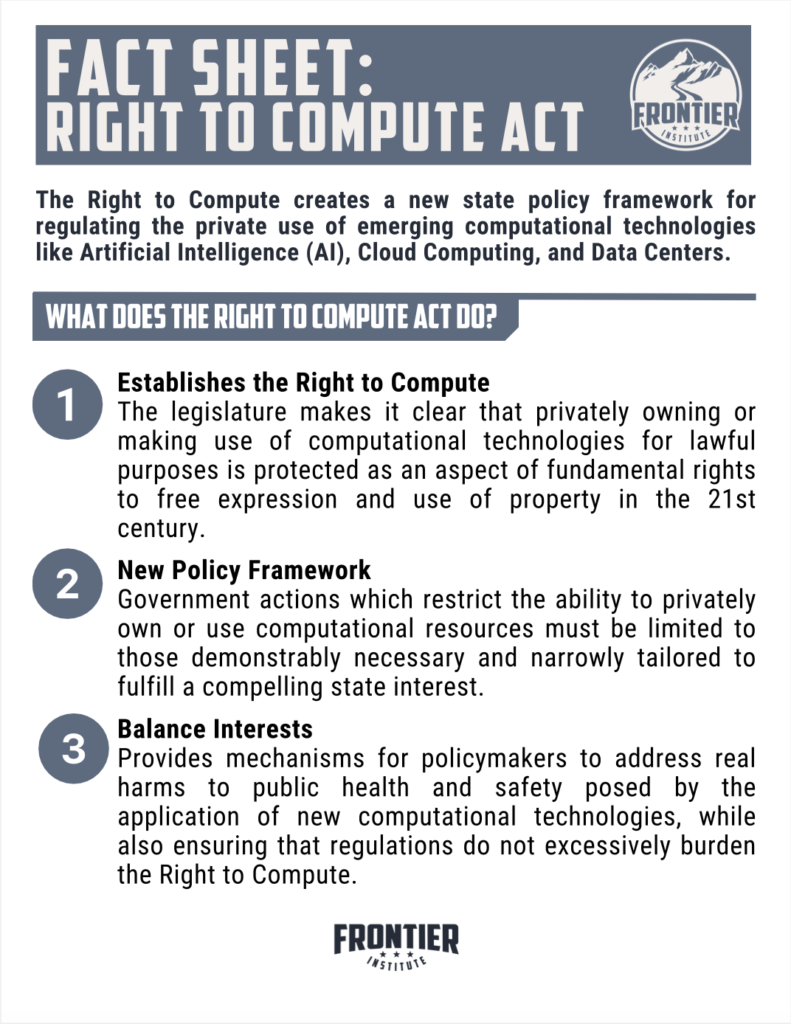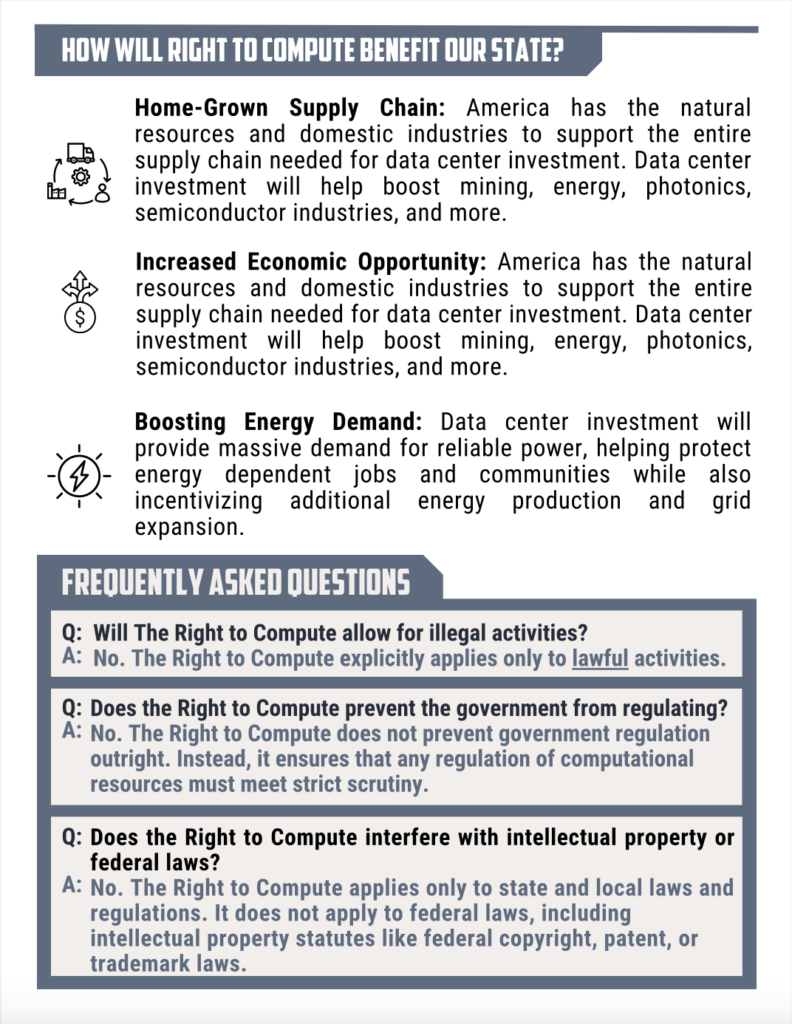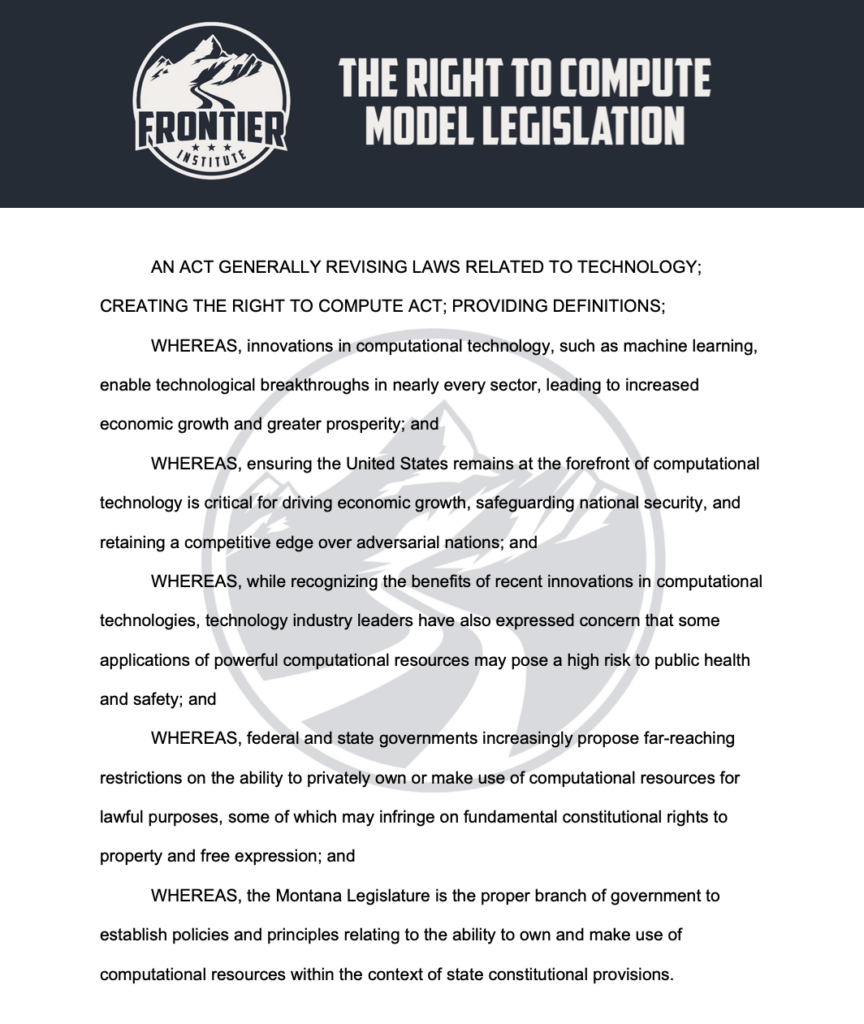Model Legislation: The Right To Compute Act
The Right to Compute Act affirms fundamental rights in the digital age
Background
Federal and State Constitutions confer extraordinarily strong protections for fundamental individual rights, including property rights and free speech. In modern courts, government actions which infringe on fundamental rights are subject to the highest standard of judicial review, known as ‘strict scrutiny’. Under this standard, the burden is placed on the government to prove that infringements on a fundamental right are:
- Necessary to serve a compelling governmental interest in protecting public health, safety, welfare, and
- Narrowly tailored to achieve that purpose, and
- The least restrictive path possible of achieving its purpose
This test sets a very high bar for the government to meet in order to justify infringing on our fundamental rights and works to actively constrain the expansion of government power.
The Right to Compute Act builds on this foundation by affirming that people have the fundamental right to freely own and use computational resources such as computers, algorithms, software, and artificial intelligence for lawful purposes, without excessive government interference.
Just as the printing press has long been protected as a foundational tool of free speech, modern computational tools must also be recognized as protected in the digital age. Like any technology, computational systems are essentially just tools – a set of computers performing complex math. Restricting the use and development of computation in effect blocks people from using tools to perform math. When put in those terms, regulation of computational systems implicates people’s fundamental rights to think, express themselves, and make use of their tools (their property).
By formally acknowledging the Right to Compute as an aspect of long-recognized fundamental rights to free speech and property, lawmakers can communicate to courts that our right to privately own and utilize computational resources must be respected to the highest degree by our government.
The Right to Compute Act sets the gold standard for protecting fundamental rights in the 21st century and positions states adopting it as world-class destinations for individuals seeking to innovate.
What the Right to Compute Act Does:
- Establish the Right to Compute: The legislature makes it clear that privately owning or making use of computational technologies for lawful purposes is protected as an aspect of fundamental rights to free expression and use of property.
- Create a New Policy Framework: Restrictions on the ability to privately own or use computational resources must be limited to those demonstrably necessary and narrowly tailored to fulfill a compelling state interest.
- Balance Interests: Provides mechanisms for policymakers to address real harms to public health and safety posed by the application of new computational technologies, while also ensuring that regulations do not excessively burden the Right to Compute.
Frontier Institute has promoted extensive research outlining the benefits of states attracting data centers and data-intensive businesses in booming industries like Artificial Intelligence, including:
- Boosting Energy Demand. Data center investment will provide massive demand for reliable power, helping protect energy dependent jobs and communities while also incentivizing additional energy production and grid expansion.
- Home-Grown Supply Chain. America has the natural resources and domestic industries to support the entire supply chain needed for data center investment. Data center investment will help boost mining, energy, photonics, semiconductor industries, and more.
- Increased Economic Opportunity. Attracting high-growth industries like AI and Data Centers will lead to increased economic growth and productivity, job opportunities, wages, tax revenues, standard of living, etc.
News Coverage of the Right to Compute:
Commentary: Protecting our right to compute — A new frontier for freedom
Pluribus News: Right to compute bills push back on AI regulation
Daily Montanan: Lawmakers look to build artificial intelligence framework for Montana
AmmoLand: Montana Just Gave Gun Owners a Digital Second Amendment
CBS42: Montana Governor Signs Right to Compute Act Into Law
Click here to download Right To Compute bill text


